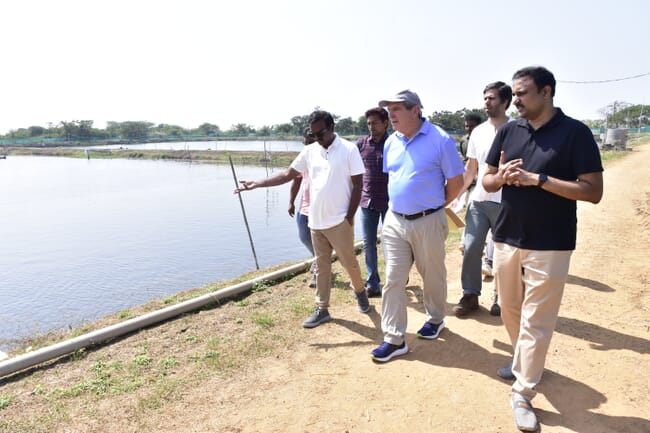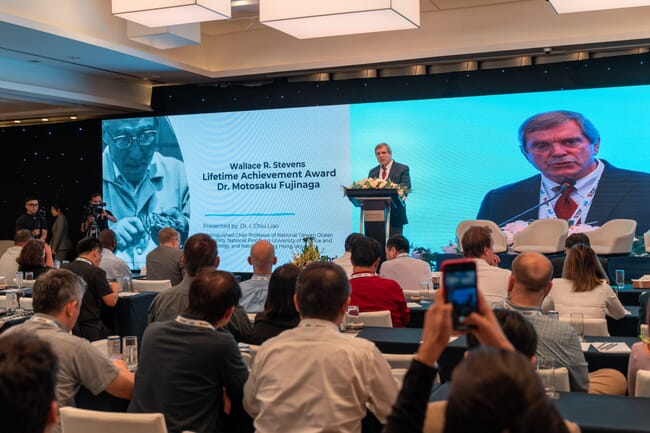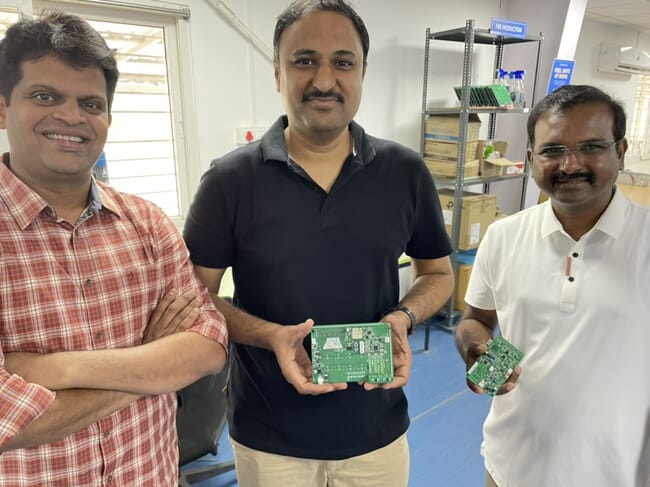
© TCRS
What are the main insights into the state of the shrimp sector that you’ve picked up of late?
Media coverage of alleged labour abuses in India has highlighted the need to openly address the issues, identify any shortcomings, and improve assurances. As with most issues, this is likely driven by rare exceptions from mainstream processing. Nonetheless, it’s important to provide a forum for stakeholders to openly review it, identify any areas for improvement, and implement corrective actions and assurances.
Digital technology is enabling previously unforeseen advances for smallholders, including accurate estimation of shrimp biomass using smart-phone assisted evaluation of check trays in ponds. This, coupled with the estimation of shrimp size, enables estimates of real-time crop value, which reduces risk and enables insurance and financing of smallholders. This is a scalable shift that one could easily see spreading throughout Asia.
Access to rich datasets from digital apps, in turn, enables enrollment in improver programmes leading to certification. The Centre for Responsible Seafood (TCRS) is working closely with AquaExchange in India and Tomota in Vietnam to develop an improver database, with support from The Nature Conservancy (TNC) through a grant from the Walmart Foundation.
There are high hopes for unified global shrimp marketing led by the newly formed Global Shrimp Council to increase shrimp consumption and lift prices.
There is a tight interconnection between shrimp breeding and disease management and a growing recognition of the need for more sentinel testing of breeding families in the actual production environment to assure that appropriate families are selected with increasing tolerance of local pathogens.
Are there any rays of hope, despite all the challenges?
An overarching theme of the [TCRS] Shrimp Summit will be identifying best practices around the world that are leading to improved efficiency, sustainability, and cost. As outlined above, there are many opportunities to improve at each level of the production chain.
Can you tell me a bit more about the summit and what you aim to achieve with it?
TCRS launched the first Shrimp Summit in July 2023, in Ho Chi Minh City. It attracted 300 in-person delegates, and 350 virtual attendees. Networking was enhanced with a tasting of shrimp from around the world and a dinner cruise on the Mekong River. We organised a pre-conference bus tour to the super-intensive Minh Phu farm and a two-day post-conference charter-flight tour to Ca Mau, where we visited a shrimp hatchery, processing plants, organic shrimp farms in the mangroves, mangrove restoration area, and a shrimp waste upcycling facility.
A post-conference poll of delegates indicated that 96 percent wanted to repeat the event this year. So, we’re in the process of planning a second Shrimp Summit in Chennai, India on 27-29 June.
What are the topics you’re most excited about?
There are lots of interesting and impactful sessions lined up, including:
- Global production and markets
- Expanding the market
- Improver programmes for smallholder farms
- The rise of digital technology
- Sustainable feeds
- Breeding and disease management
- Innovation
- And a special session on alleged labour abuses in Indian processing
How do you select the venues and where next?
We select the venues based on where the action is. Vietnam was exciting because of its progress on both super-intensive tank farms (as exemplified in the pre-conference tour to the huge Minh Phu Loc Anh farm) and unfed organic farms in harmony with mangrove forests in Ca Mau.
India is exciting because of its remarkable growth and reliance on smallholder farms and its very recent game-changing shift toward digital technology.
Indonesia might be next, because it’s another Asian powerhouse with many fascinating developments, and it’s driven by smallholder farms who might benefit from the TCRS improver programme.
How has the transition from GSA to TCRS been treating you?
I retired from the Global Seafood Alliance (GSA) after 25 years as president at the end of 2022. I’ve devoted my time to TCRS since then. It’s been a fun ride. TCRS is a small non-profit with no full-time staff (including me). The tiny team means that we can move fast in our decision making and implementation. It feels like a startup. I enjoy that.

Dr Fujinaga is widely seen as the father of shrimp farming
How and why was TCRS formed?
In 2003, GSA applied for a grant from a philanthropic foundation to improve shrimp farming practices in Asia. Our proposal won the competitive grant process, but we subsequently discovered that GSA was not eligible to receive foundation funds since it is incorporated as a non-profit trade association. The GSA board felt that research and education were important components of the sustainability mission. In 2009, it took steps to form an independent charitable organisation called the Responsible Aquaculture Foundation (RAF) with its own governance structure and board of directors.
Initially, RAF pursued grant funding from the World Bank to conduct a series of case studies on aquaculture disease management. The first was in Chile with infectious salmon anaemia, the second in Vietnam with early mortality syndrome, and the third in Mozambique and Madagascar on white spot syndrome virus. It subsequently conducted projects on food safety, social accountability, and animal welfare. To help disseminate its findings, it developed 25 online courses on disease management, water quality, social accountability, food safety, and animal welfare. Another 5-10 courses will be released soon.
Nearly the entirety of funds from each grant was devoted to executing the projects, leaving little funding to support administrative costs. For 10 years, RAF relied on GSA for office space, book-keeping, taxes, IT systems, and project management.

The trio are holding circuit boards that they’ve designed for their digital equipment for smallholder farms
As I approached my retirement from GSA, it occurred to me that I might lend a hand to RAF in helping it grow and achieve independence. The RAF board invited me to assume the role of president. We decided to change the name of the organisation to The Center for Responsible Seafood (TCRS) to reflect the organisation’s interest in pursuing a broader scope that included all seafood – farmed and wild catch. Within a few months, we established an office, hired an administrative team, pursued several grants, and started several new projects.
So, in answer to your question, GSA helped found TCRS, provided its first home, and assisted with financial support. TCRS could never have gotten to his point without GSA support. Now, TCRS is an independent organisation with its own office and staff and an exciting mission and programme.
What are GSA’s and TCRS’s greatest achievement in the shrimp sector to date?
GSA can be proud to have helped the shrimp sector navigate many issues over the years including mangroves, antibiotics, food safety, antidumping, social issues and animal welfare. The BAP certification programme has become an important tool for retailers to gain assurances of best practices throughout the supply chain. Of course, this job is never done, and the system must be continually reviewed and improved to navigate the challenges of climate change, etc.
TCRS is a young organisation that’s just getting started, but I think that it can serve a significant role in the “pre-certification” arena, especially with Improver programmes for smallholder farms. It’s also working in the innovation space with optimisation of intensive shrimp tank designs and in the area of novel feed ingredients, both in collaboration with TNC.
How do you see the role of TCRS evolving in terms of your involvement with shrimp?
As TCRS builds its improver programmes for smallholders in collaboration with digital solution providers, I see it developing an industry-wide database which will enable hundreds of thousands of previously unreachable small farms to enter the sustainability journey and ultimately become certified. The rich dataset will provide an unprecedented landscape view of feed and energy efficiency and of carry capacity on a landscape basis.
If you could solve three issues in shrimp aquaculture what would they be?
- Openly address with alleged labour abuses and restore confidence in farmed shrimp.
- Assist smallholders in improving their efficiency, profitability, and sustainability.
- Improve disease tolerance in Asian shrimp farming by capitalising more on sentinel testing of breeding families in the production environment.




